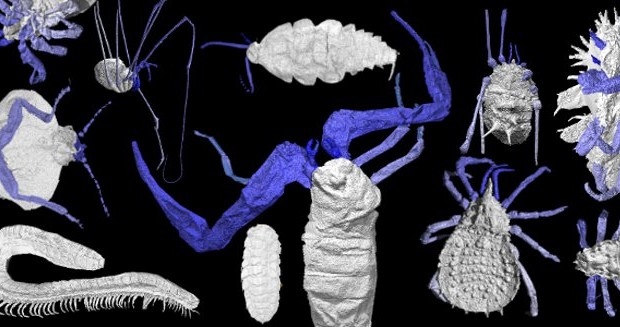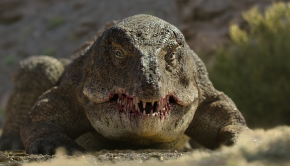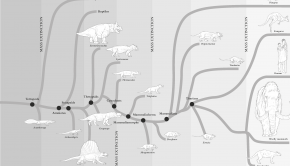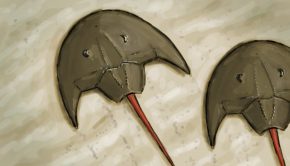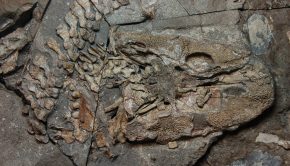Episode 10: Carboniferous Arthropods
The first animals came onto land sometime before 425 Ma. These early colonizers were members of a group called the arthropods – probably early relatives of the millipedes first, followed shortly by arachnids, and then insects at some point later. Then, as now, these animals comprise the great majority of known living organisms. However, early land animals – especially those from the Palaeozoic era (542 – 252 Ma) – are relatively rarely preserved as fossils. The Carboniferous period (350-299 Ma) is an exception to this rule. During the Late Carboniferous, there is a window in which land animals are found preserved as three-dimensional holes within the iron carbonate mineral siderite. This kind of preservation allows palaeontologists to use 3D reconstruction techniques – such as high resolution CT scanning – to investigate this unique insight into early land-based ecosystems. Today we’ll be talking with Russell Garwood – an 1851 research fellow at the University of Manchester – about the Carboniferous, the land animals which were around at the time, and the techniques he uses to study these.
Podcast: Download (Duration: 1:01:29 — 84.4MB)
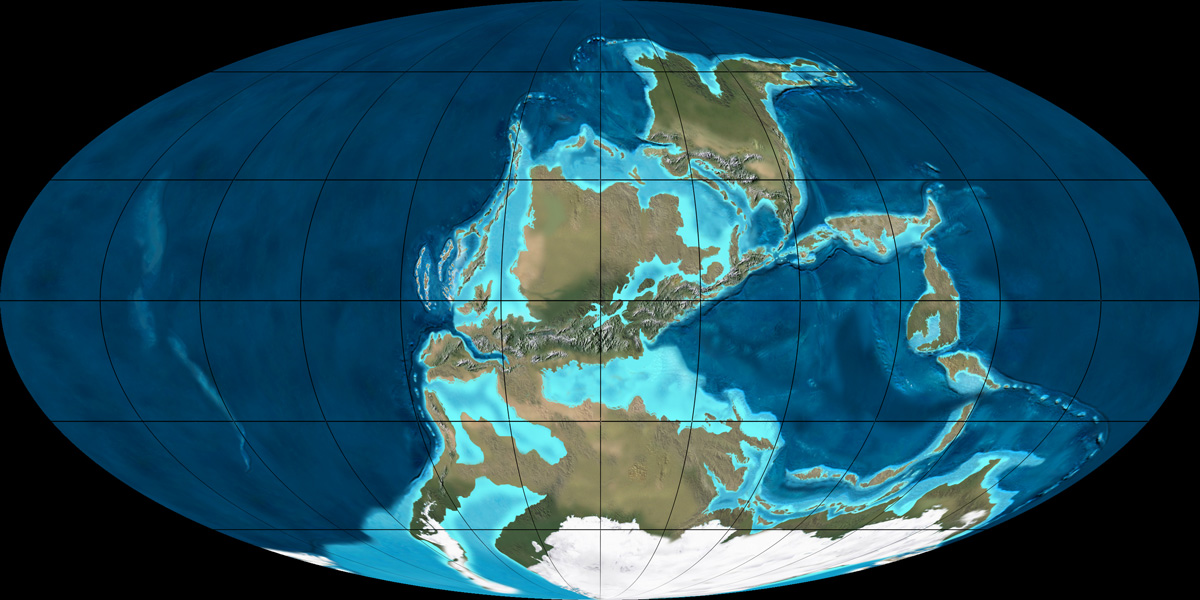
In the Carboniferous the coming together of the continental landmasses, Laurasia (North) and Gondwana (South) to form the supercontinent Pangaea. This created a unique series of circumstances that saw the preservation of fossils in terrestrial environments. Ron Blakey, Colorado Plateau Geosystems USA
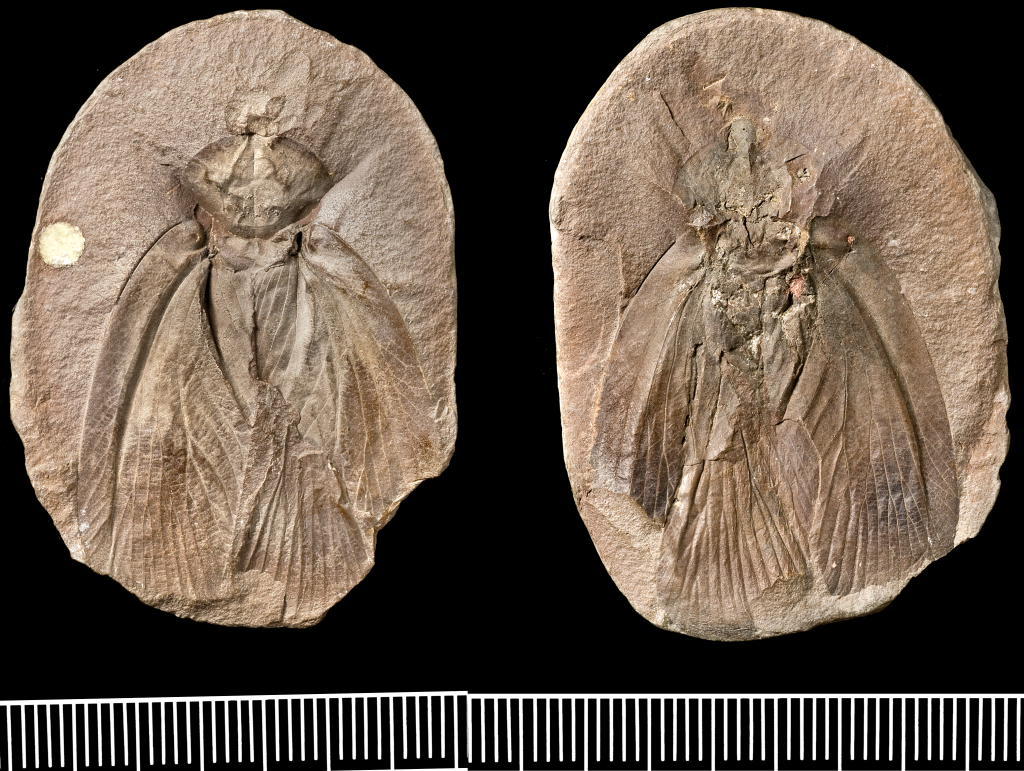
The siderite nodule (311 million years old, from the UK) with the roachoid fossil insect Archimylacris eggintoni inside. Visible on the surface are the headshield and wings, but micro-CT also revealed both limbs, mouthparts and a portion of the body.
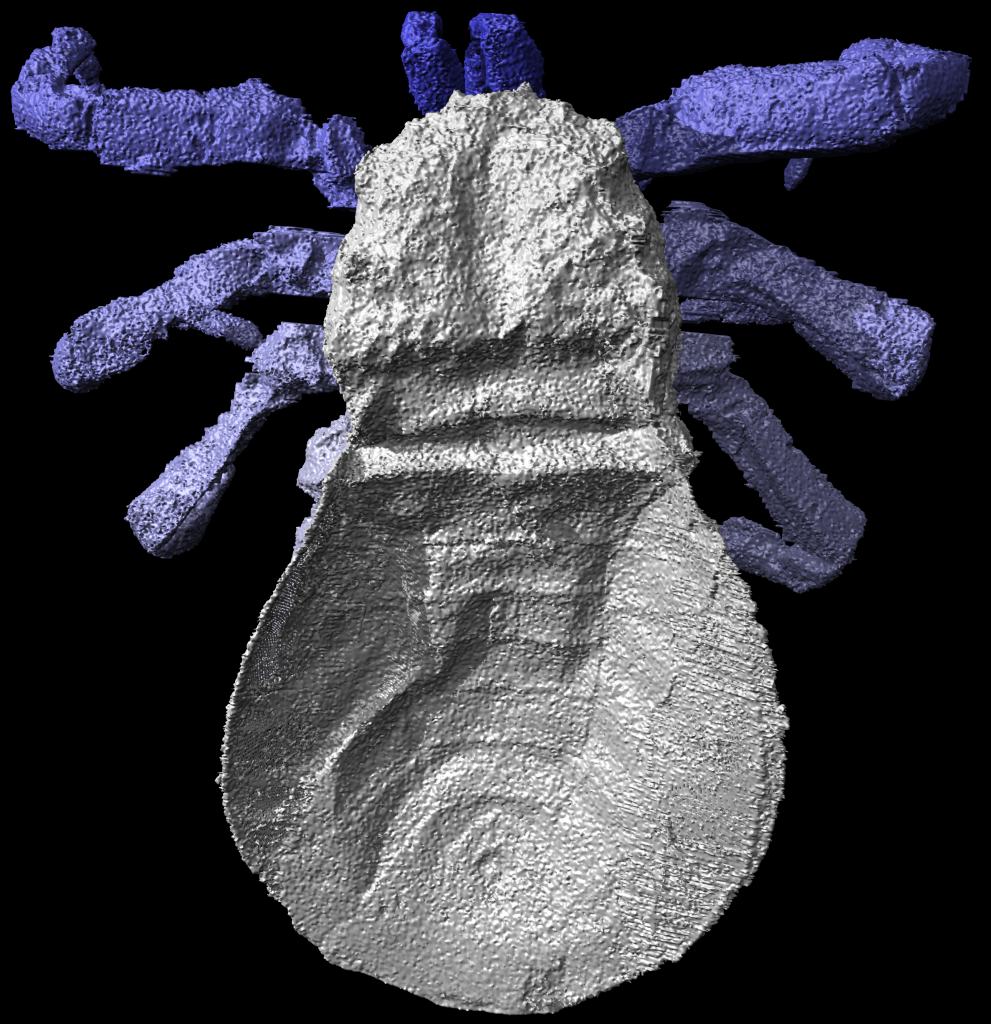
A member of the extinct trigonotarbid arachnids. This species Anthracomartus hindi is 311 million years old. Unlike spiders trigonotarbid arachnids have a segmented abdomen and couldn’t make silk. This species may have been an ambush predator.
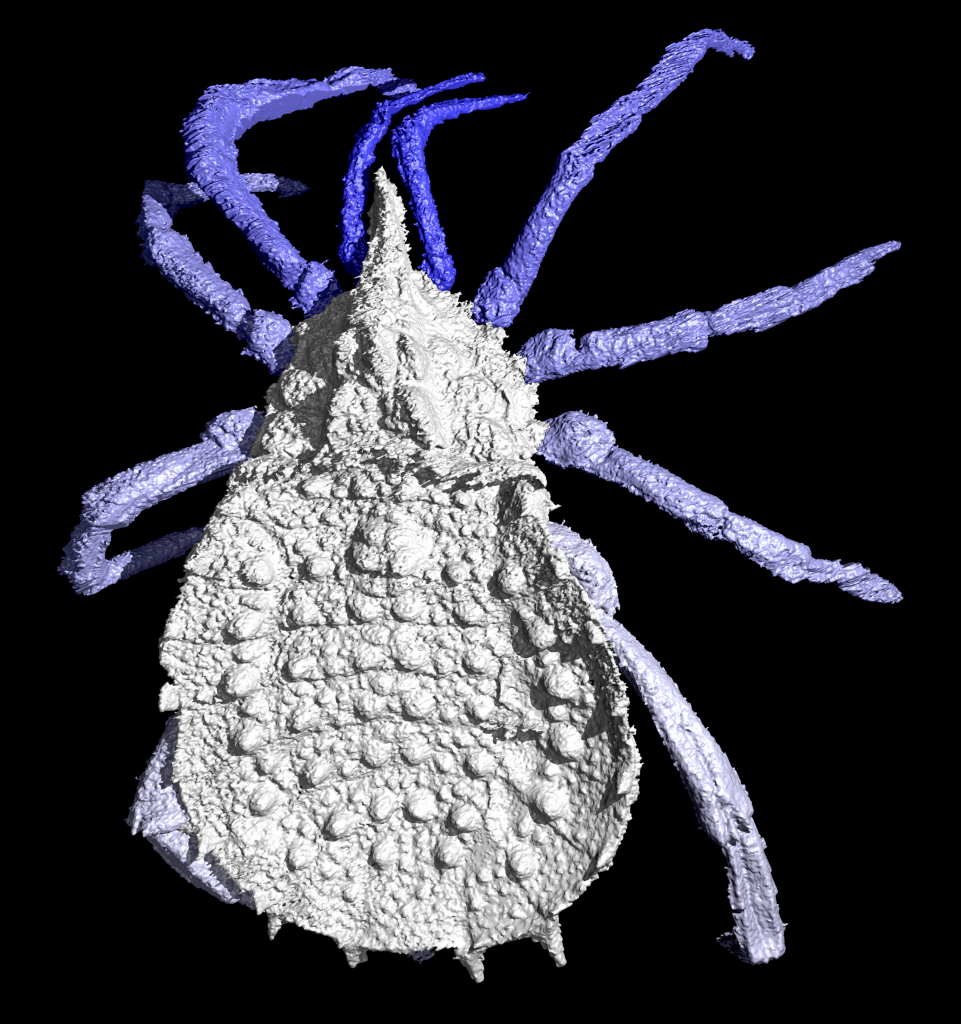
Another trigonotarbid arachnid, Eophrynus prestvicii (311 million years old) – this one a heavily spined variety. It was probably a cursorial predator – i.e. it ran down its prey.
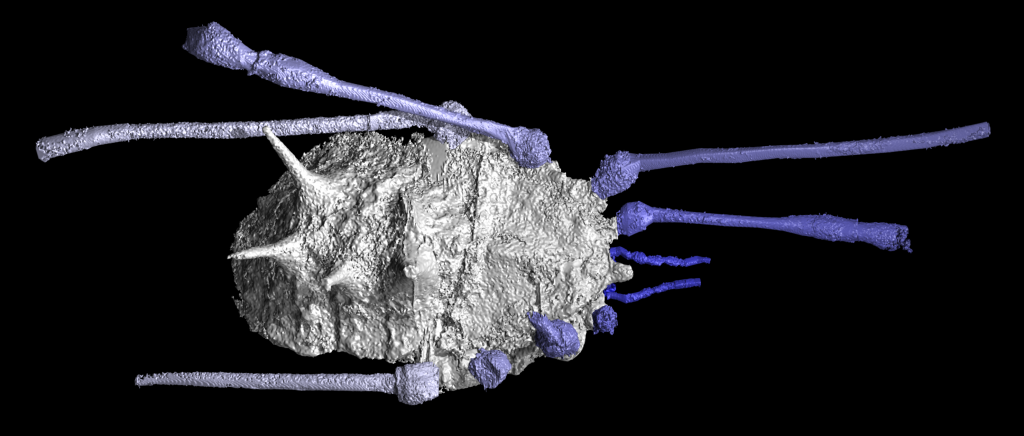
A 305 million-year-old harvestman arachnid (a member of the order Opiliones) from France. This fossil, reconstructed with micro-CT, was resolved as a member of an extant order called the Dyspnoi in a cladistics analysis.
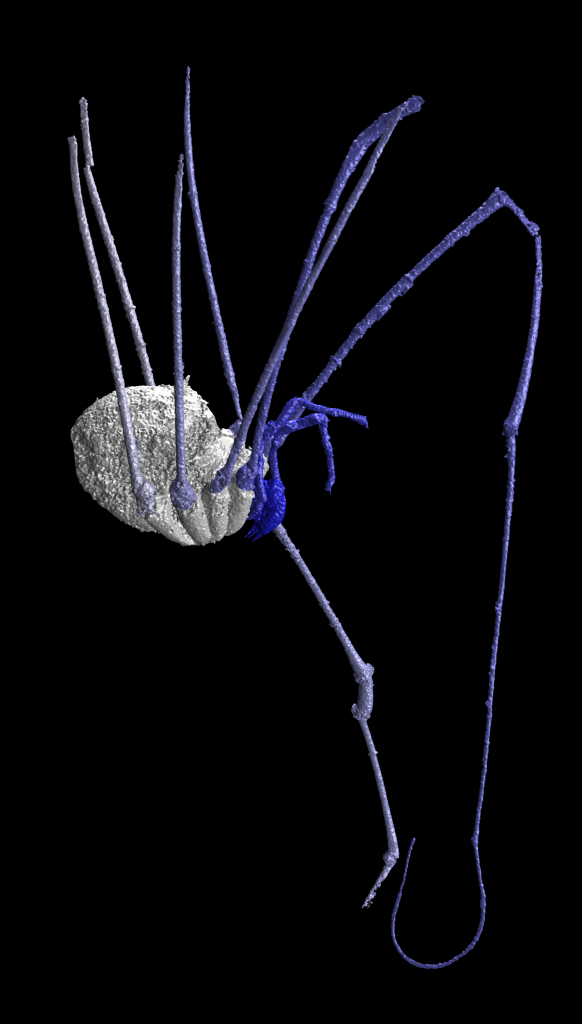
Another 305 million year old harvestman arachnid from France. The species was placed as a member of the extant suborder the Eupnoi by a cladistics analysis.
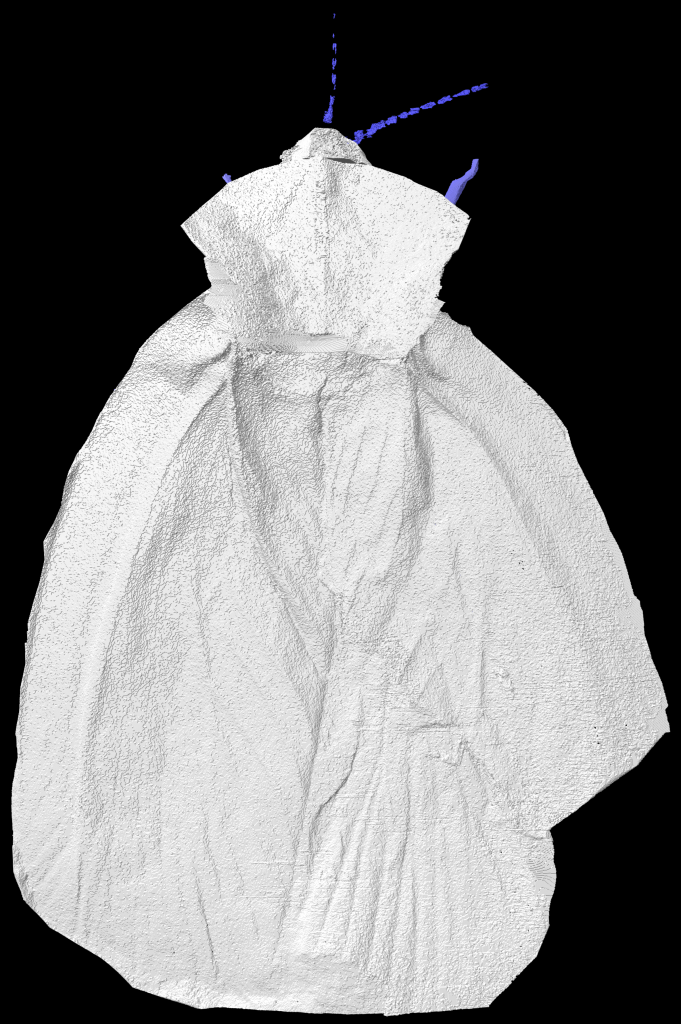
The dorsal and ventral anatomy of the roachoid insect Archimylacris eggintoni revealed in a micro-CT model…
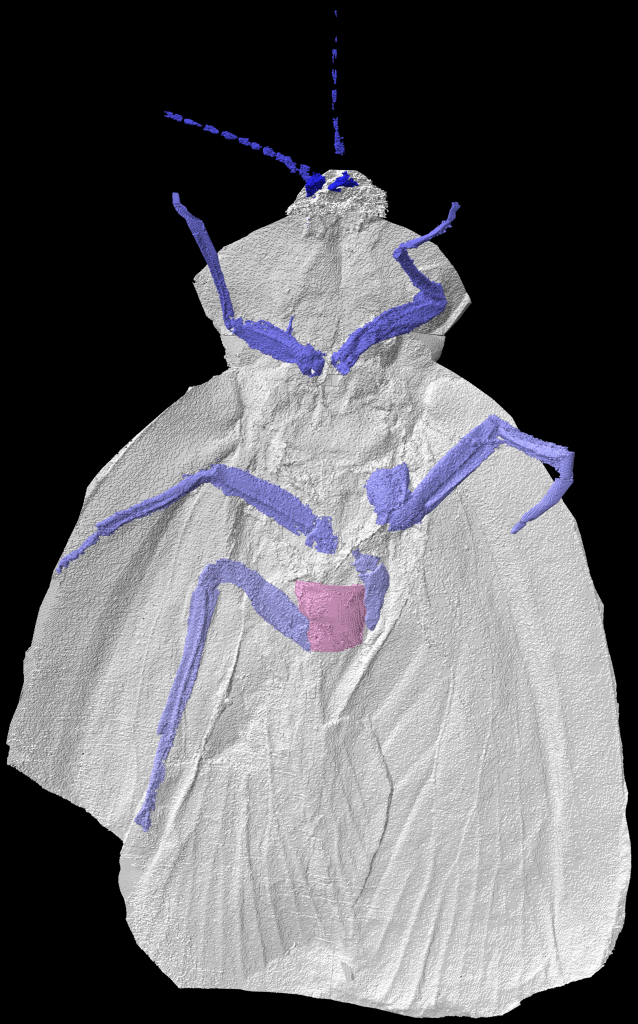
…The antennae, mouthparts, and limbs, along with a portion of the body (pink) weren’t visible to the eye in the fossil, but were revealed with CT.
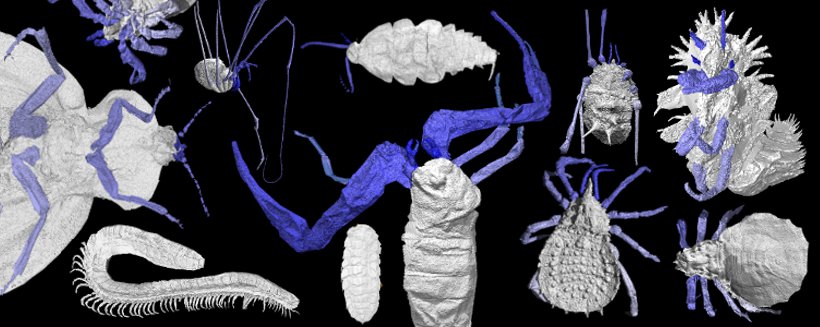
A range of Carboniferous arthropods reconstructed with the aid of X-ray microtomography. All are between 312 and 305 million years old, and were preserved within siderite nodules.
All images courtesy of Dr. Garwood except where otherwise stated.
Corrections: Misquote of the age of the Carboniferous, which currently ranges from 359-299 Ma. Barnacles were quoted as being cnidarians, when they are in fact cirripedes.

